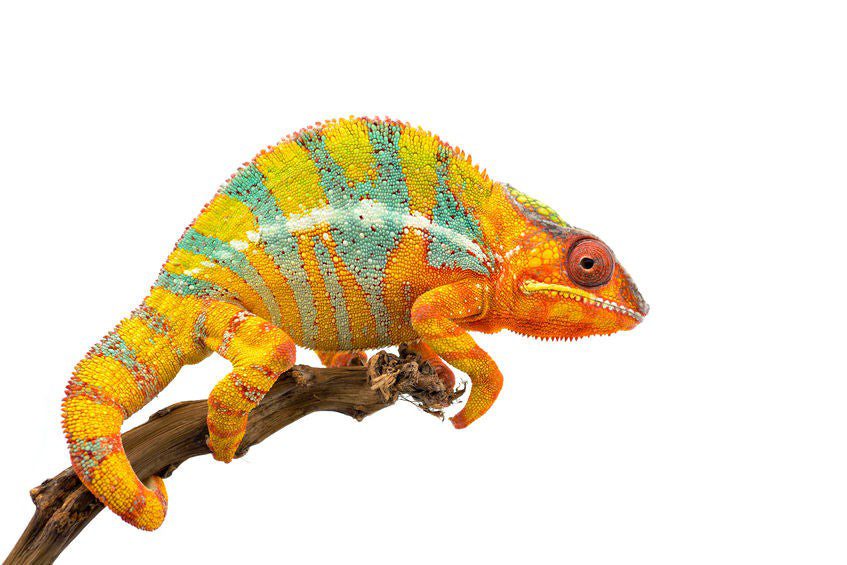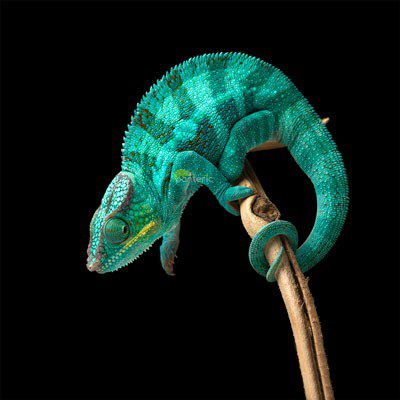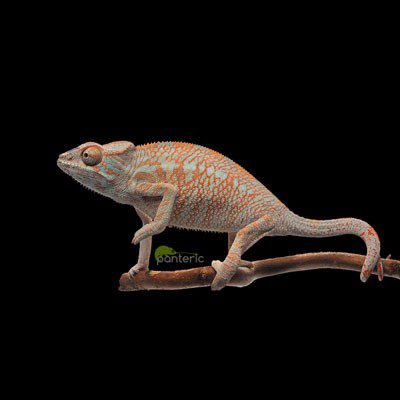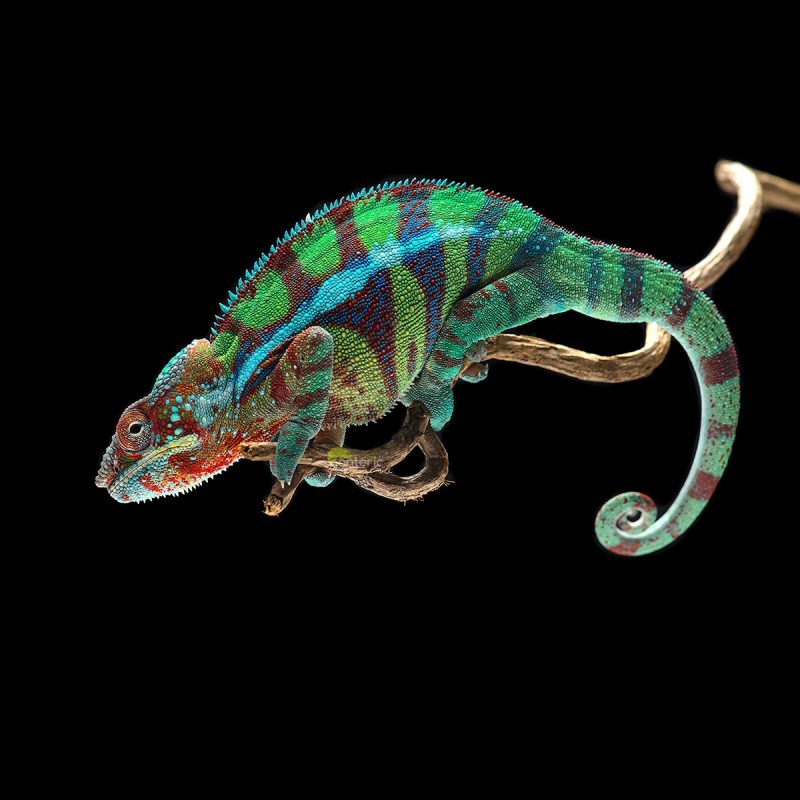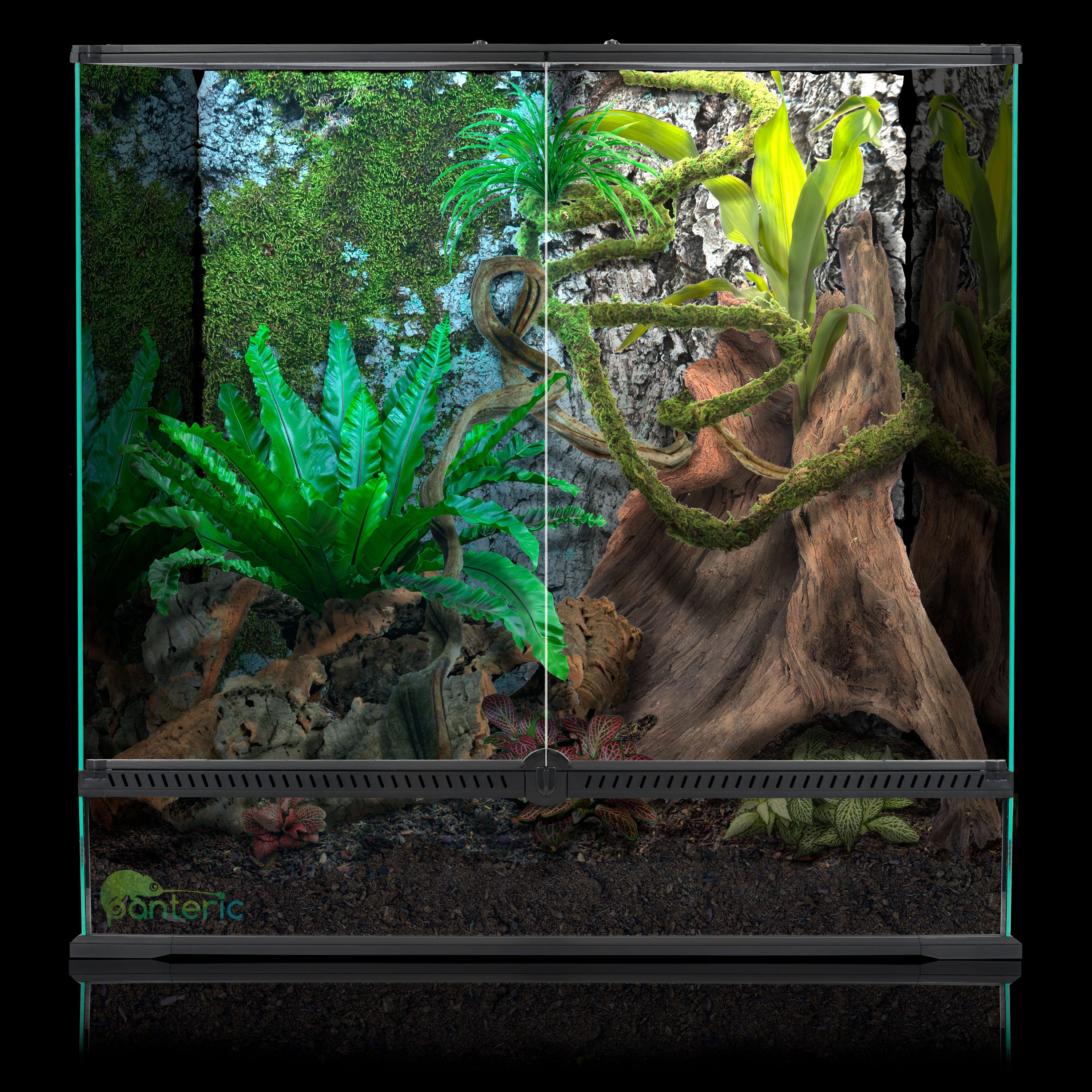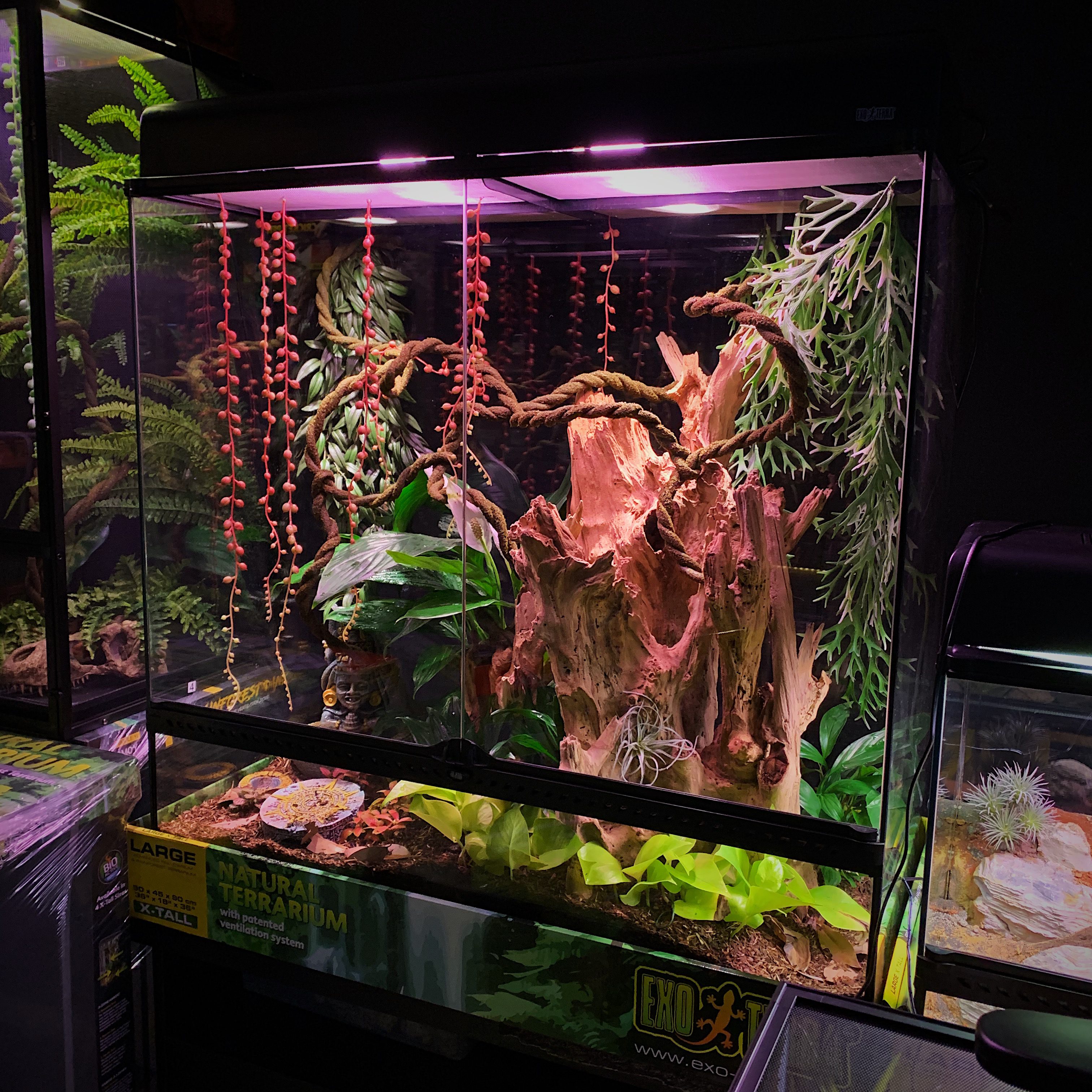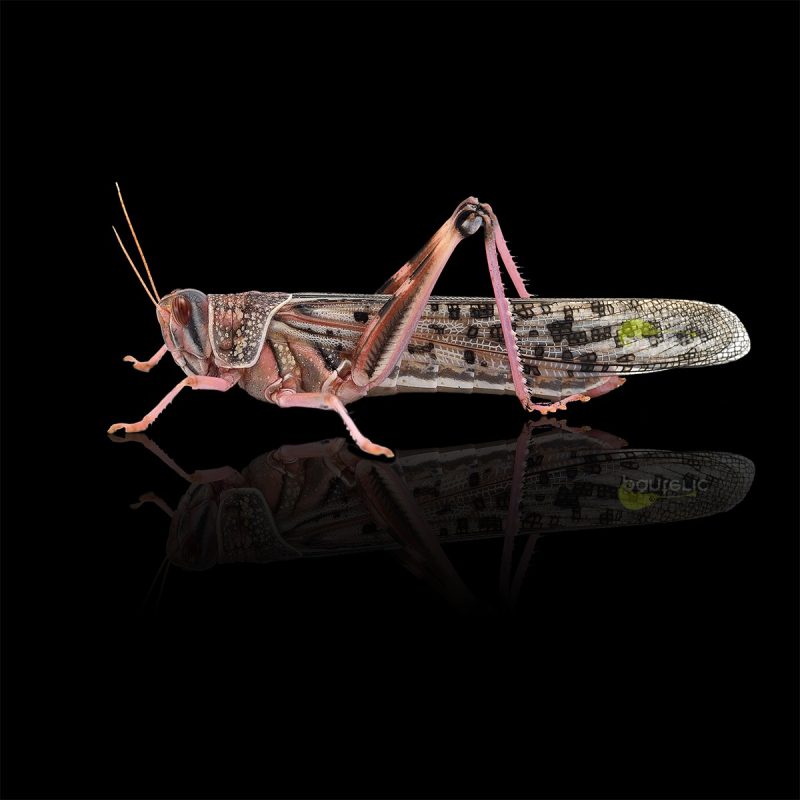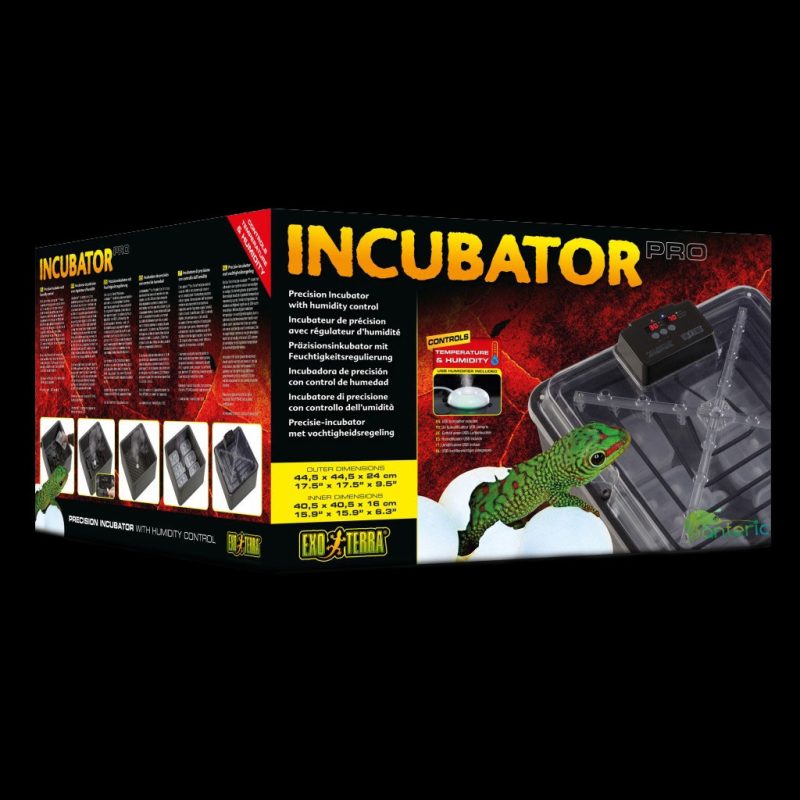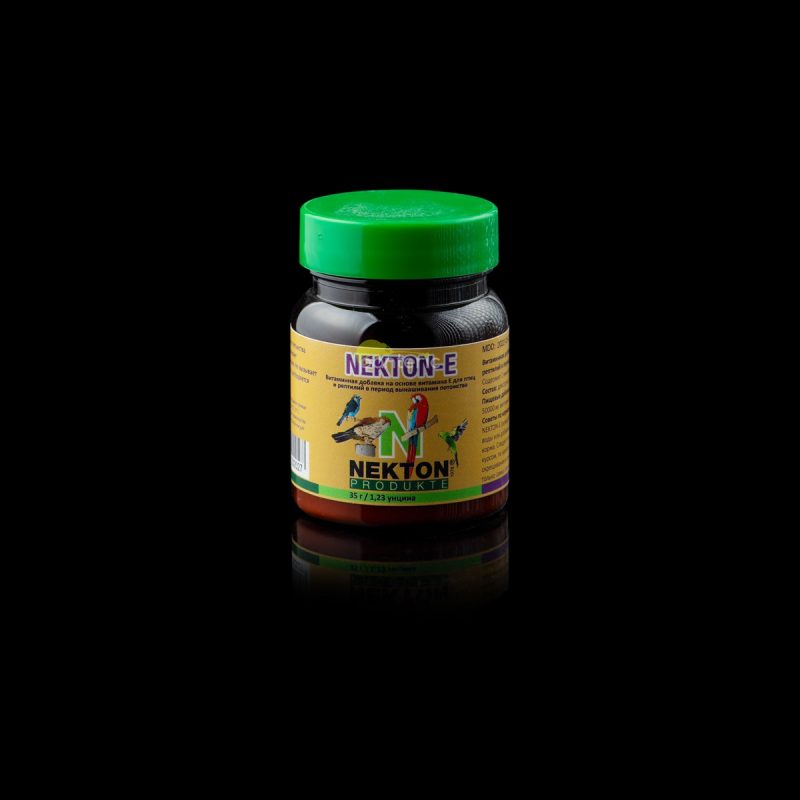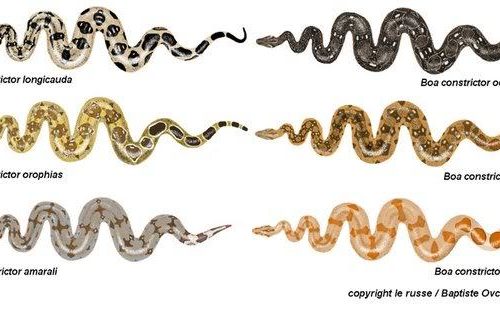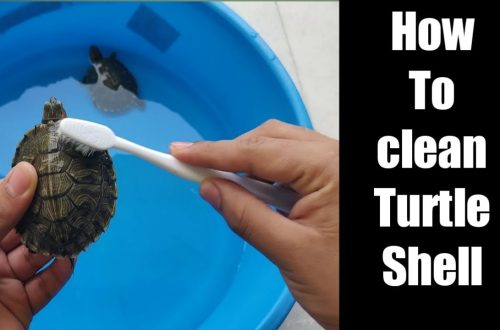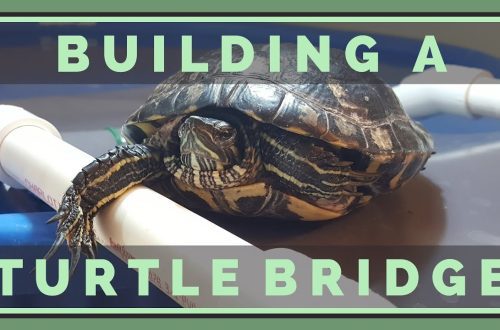To add an item to the Wishlist, you must
Login or Register
Panther chameleons have the brightest and most varied colors. Their calm disposition and sociability attracts many amateur terrariumists.
In this article, we will tell you how to care for a panther chameleon, what to feed, how to create the right conditions for their life.
In this article, we will tell you what you need to do to make the panther chameleon the best pet in the house. How to keep it, what to feed it, what terrarium to choose, what equipment you cannot do without to create the right conditions.
Together with the Panterik team, keeping a chameleon at home will be very simple.
Panther chameleons are diurnal lizards that live in humid coastal areas with a warm climate. They live in Madagascar, as well as on the nearest islands of Nosy Be, about. St. Mary and Nosy Mangaben. Choose convenient places among the foliage on the branches of trees and shrubs.
Depending on the habitat, stable color forms are common. The main colors are usually green, blue or red. Females are usually orange, beige or brown. The sides are decorated with vertical dark stripes. The panther chameleon got its name because of the combination of orange and black and a spotted-striped pattern.
These animals are big. Males are long with a tail, and their tail is long, reaching 40-55 cm, females are smaller – up to 35 cm. Therefore, spacious terrariums are chosen for their maintenance.
Containment Equipment
- Minimum terrarium size for one male 45 * 45 * 90 see but preferably more 60 * 45 * 90 see or 90 * 45 * 90 see , in such volumes it will be possible to create more places for the movements of the chameleon.
- The background temperature during the day in the terrarium should be 25-28°C. At the heating point, it must reach 35 °C. On one side of the terrarium, a lamp is installed with heating lamp , which is turned off at night, the wattage of the lamp is selected depending on the size of the terrarium and the background temperature in the room. At night, the temperature should drop to 20-24°C. Temperature must be controlled thermometer , preferably at different points in the terrarium. This is necessary so that there is no overheating of the entire volume and there is always a choice – to warm up or be in a cooler zone.
- The substrate is best done in two layers. In the terrarium, it is desirable to plant live plants, so the bottom layer of soil should be from tropical land . The top layer can be used tree bark mixed with moss. Such soil holds moisture well and does not grow moldy.
- Pet shelters are not needed. In the terrarium, he moves along the branches and vines, which it will be convenient for him to clasp with his paws. He should have convenient access to the warming point, to watering places and the ability to rise from the ground. Driftwood is placed in the terrarium, Creepers , scenery , live or artificial plants behind which the chameleon can hide.
- Chameleons need lamps for lighting. daylight , ultraviolet и specialized lamps . They are designed taking into account the perception of the environment by the eye of a reptile. At night, chameleons sleep, all lighting devices are turned off at night, for convenience, you can install them on timer . Light day in the terrarium is 12-13 hours. Installing night lighting will be an indispensable thing. If the light turns off suddenly and the terrarium becomes very dark, the chameleon may become lost, frightened and not find a familiar place to sleep. Lamp Full Moon turns on automatically when the daylight is turned off and helps the chameleon find a secluded spot. It creates a soft moon glow in the terrarium, does not interfere with the pet’s sleep.
- Humidity is maintained high: from 60 to 90%. Terrarium sprayed out atomizer several times a day. Use distilled or osmotic water to avoid plaque on the walls. For convenience, you can install automatic rainfall system . The soil should be moist, but water should not accumulate at the bottom. The terrarium should not have a swamp.
- Only use the terrarium with a proven ventilation system that promotes good air exchange and prevents the windows from fogging up.
What to feed a panther chameleon?
The panther chameleon eats insects. Their diet most often includes crickets, locusts and caterpillars. Food should be varied.
Before feeding, insects are sprinkled with special vitamins and calcium . If you are not afraid of insects, the chameleon can be hand-fed. It shoots food with its tongue, feeding time will be fun for all your family members. Insects can also be given with tweezers or released into the terrarium. But it will make cleaning more difficult. Tweezers must be safe: wooden or metal with protective soft tips. Young chameleons should be fed every day. Adults are allowed to feed every other day, after two.
These lizards do not drink water from ordinary drinkers, so you need to make sure that he gets enough liquid. In nature, chameleons lick water after rain or dew. At home, they need to install waterfall or drip system . It is important to monitor the drinking of a chameleon, teach him to drink a stream of water from atomizer when spraying the terrarium. If you notice that the chameleon does not drink at all, you need to supplement it manually, for example, from a syringe (without a needle).
Chameleon breeding
Reproduction of chameleons is not the easiest process. The difficulty lies in the incubation of eggs, it requires wintering. That is, lowering the temperature for a certain period, followed by raising it to complete incubation. Females are planted to the male for mating, then they are planted. The female is painted in a rich color, so you can understand that she is pregnant. During pregnancy, females should be fed abundantly and given more minerals , additives for good egg formation. After 1-2 months, the females descend to the ground and dig out a place for masonry. The terrarium should have a sufficiently large layer digging soil so that it is convenient for the female to dig a hole for eggs. There can be 12-30 pieces in a clutch. After the eggs are dug out and transferred to a special substrate for incubation . It does not mold and holds moisture well. The eggs are then transferred to incubator where they are incubated for almost 9 months.
Life span and maintenance
With proper maintenance and care, the average life expectancy of panther chameleons is up to 8 years. In nature, these chameleons live for about two years.
Contain panther chameleons one by one. These lizards are very territorial. Groups of one male and several females are created only for breeding, and after mating they are seated.
Diseases of panther chameleons
Like any animal, a panther chameleon can get sick. Of course, subject to all the rules, the risk of disease is minimized. If you suspect any disease, call our store and we will advise you.
- To avoid digestive problems, it is important to control the temperature in the terrarium. The chameleon should have a warm-up point where it will warm up.
- To avoid rickets, one must not forget about vitamin and mineral supplements and give them at each feeding. UV lamps must be replaced at the specified time.
Eublefars or leopard geckos are ideal for both beginners and experienced terrarium keepers. Learn how to improve the life of a reptile at home.
Let’s talk in detail about the terrarium for the agama, heating, optimal lighting and proper nutrition of the reptile.
Let’s take a closer look at Python. Let’s talk about its origin, features and content at home.
